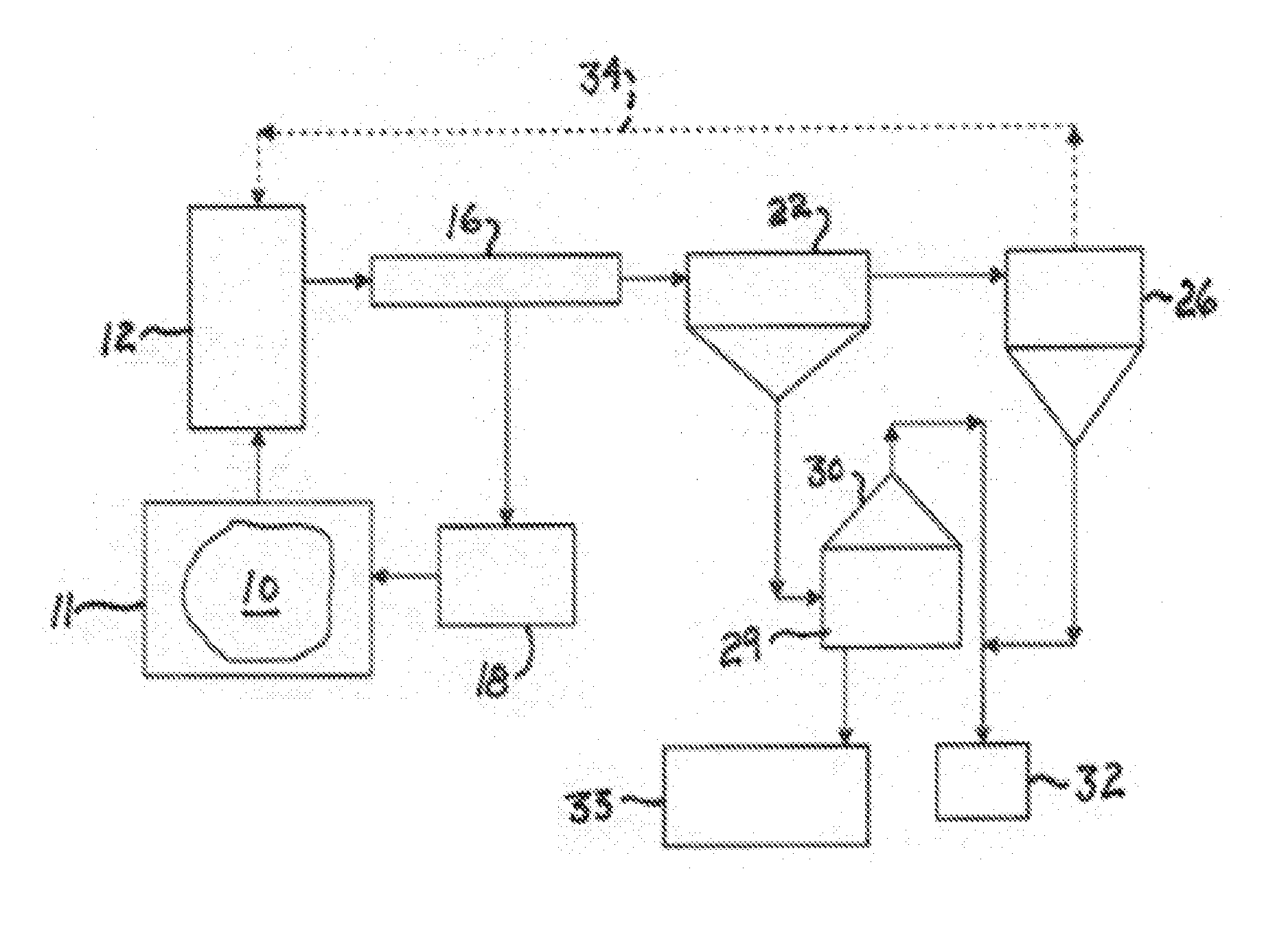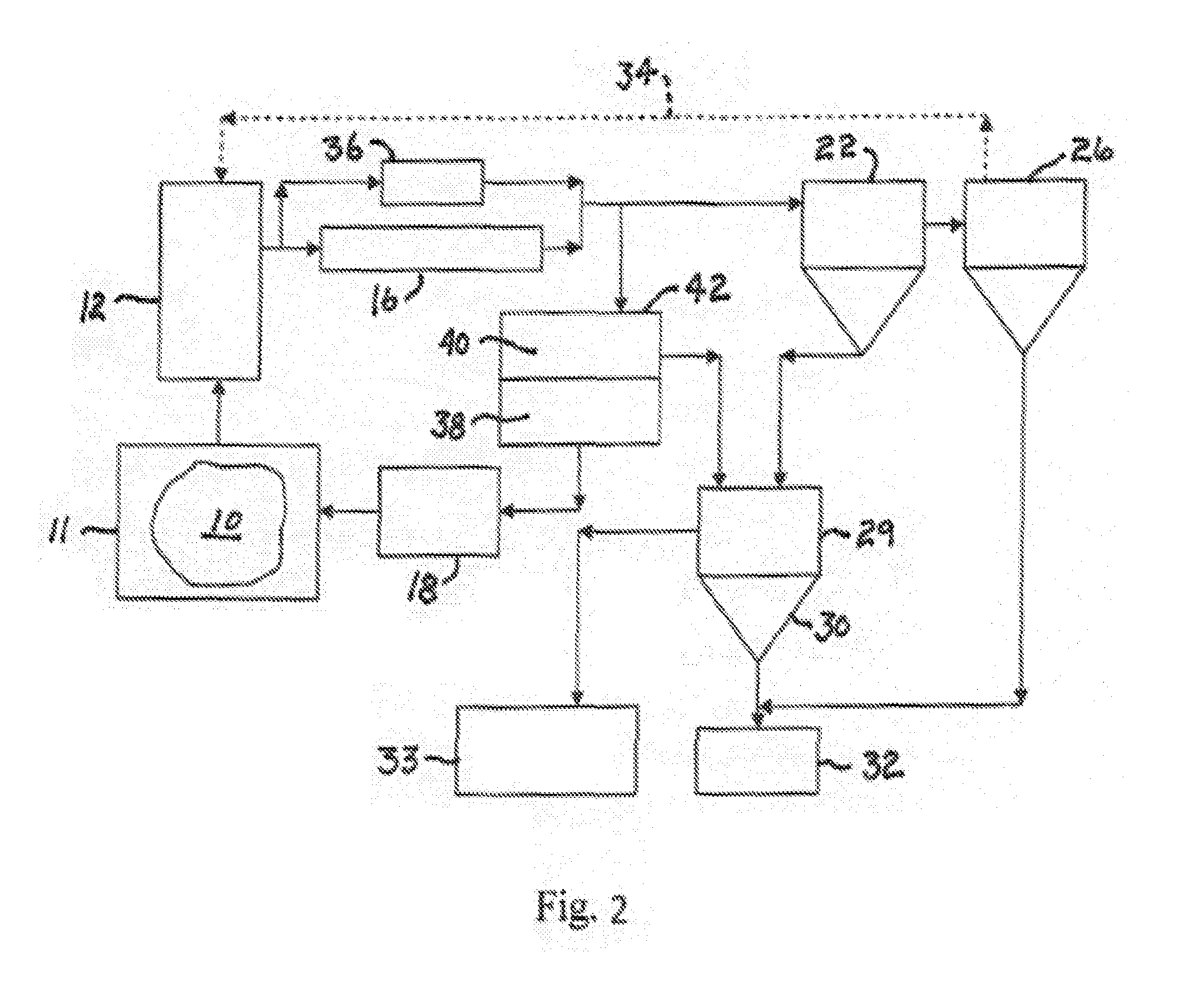Process for obtaining oils, lipids and lipid-derived materials from low cellulosic biomass materials
- Summary
- Abstract
- Description
- Claims
- Application Information
AI Technical Summary
Benefits of technology
Problems solved by technology
Method used
Image
Examples
example 1
[0048]This example illustrates the process of the invention using the species Dunaliella salina as a low cellulosic algal substrate. This alga was obtained as a spray-dried powder from a Chinese source; Qingdao Sinostar Import & Export Co., LTD. This alga which also contains nominally 2% β-carotene was evaluated for extractable lipid content by Minnesota Valley Testing Laboratories (MVTL), located in Minneapolis, Minn., using acid hydrolysis and ether extraction in accordance with the “Association of Analytical Communities” (AOAC) Official Method 996.06 fat; total, saturated, and unsaturated, in foods. This method is utilized to determine what is herein after referred to as the “gravimetric fat value” of alga or other low cellulosic biomass and is expressed as a percentage in weight percent (wt. %). The gravimetric fat value for the fat or lipid content in Dunaliella was 8.5 wt. %, with 2 wt. % being β-carotene. Hydrothermal carbonization of the alga was conducted in a 450 ml Parr s...
example 2
[0049]This Example teaches that the char created during the process of the invention retains a high level of energy content, despite removal of lipids and lipid-derived materials on extraction. An important issue with the present invention is whether the extracted char retains significant energy content and constitutes an important product of the process or whether most of the energy content is lost in the extraction process. To examine this issue, the heat of combustion of a char derived from Dunaliella salina by the process of the invention in the char produced in Example 1 was submitted to Galbraith Laboratories, Inc., Knoxville, Tenn., for heat of combustion analysis. Similarly, the same char that had been extracted with hexane to remove the lipids and lipid-derived materials was dried and submitted for analysis. The corresponding values were as follows: non-extracted char heat of combustion=12,571 BTU / lb and extracted char=11,881 BTU / lb. In this Example, only 5.5% of the energy...
example 3
[0050]This example teaches that the extracts obtained from char products are predominantly lipids and lipid-derived materials. A microalga, Chlorella sp., was obtained from Biocentric Algae, located in San Juan Capistrano, Calif., and used in this example. Hydrothermal carbonization of the material (31.3 g) was conducted as in Example 1 but at 20 wt. % solids, 200° C., and for 2 h. Char mass was 10.02 g and the yield was 32.0 wt. %. Elemental analyses for starting Chlorella was wt. % C=51.6; wt. % H=7.1; and wt. % N=10.1; and for the char was wt. % C=66.2; wt. % H=8.0; and wt. % N=7.3. The char was treated with 0.1 HCl to ensure that all fatty acid products absorbed were in the acid form and extractable. The char was thoroughly washed with distilled water, and the acidified char was freeze-dried. The resulting dry char weight 8.54 g and was swirled with ca. two volumes of methyl-t-butyl ether (MTBE) for an hour. The mixture was vacuum filtered and the filtercake washed with MTBE. Re...
PUM
| Property | Measurement | Unit |
|---|---|---|
| Temperature | aaaaa | aaaaa |
| Time | aaaaa | aaaaa |
| Fraction | aaaaa | aaaaa |
Abstract
Description
Claims
Application Information
 Login to View More
Login to View More - R&D
- Intellectual Property
- Life Sciences
- Materials
- Tech Scout
- Unparalleled Data Quality
- Higher Quality Content
- 60% Fewer Hallucinations
Browse by: Latest US Patents, China's latest patents, Technical Efficacy Thesaurus, Application Domain, Technology Topic, Popular Technical Reports.
© 2025 PatSnap. All rights reserved.Legal|Privacy policy|Modern Slavery Act Transparency Statement|Sitemap|About US| Contact US: help@patsnap.com



